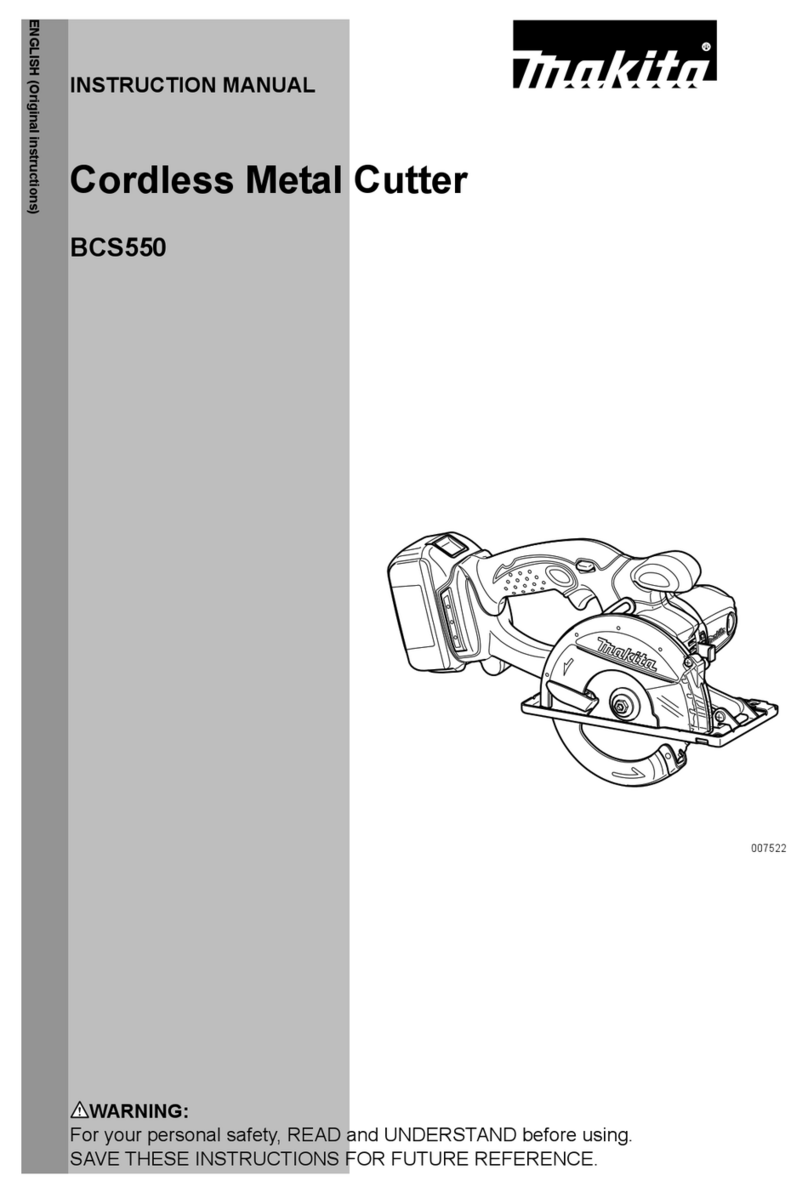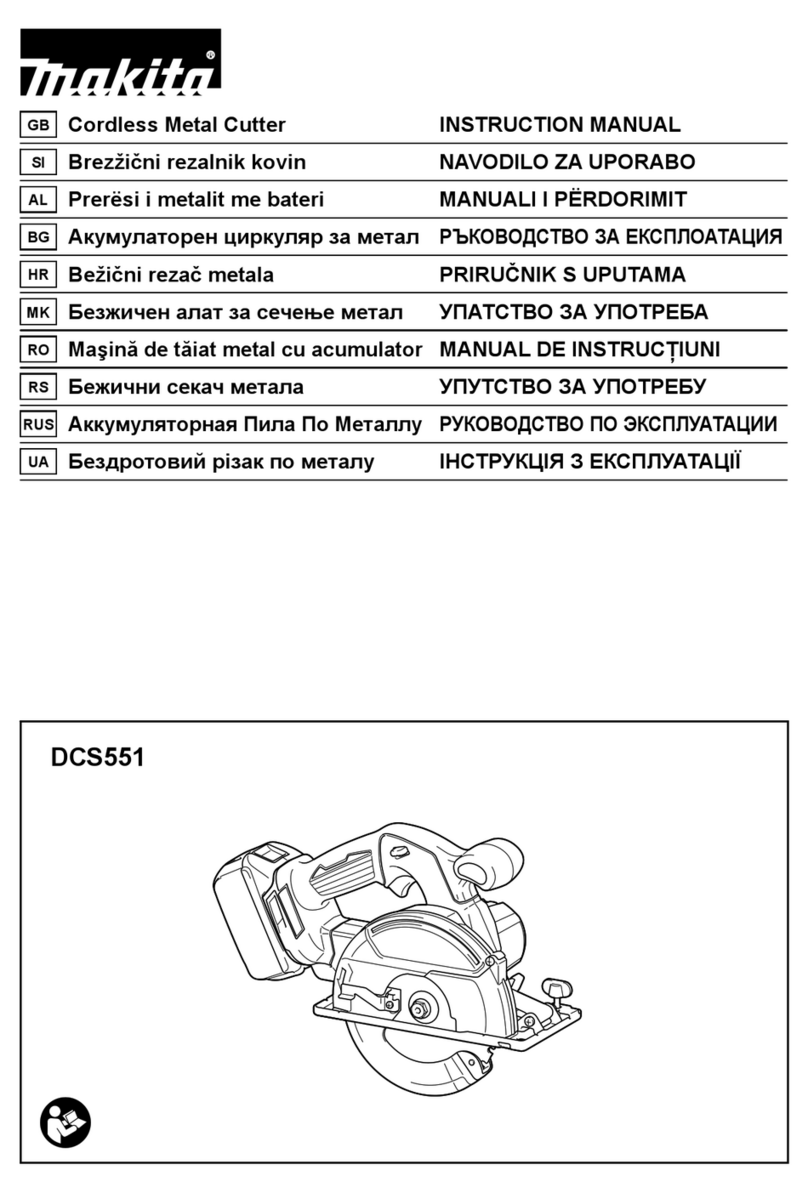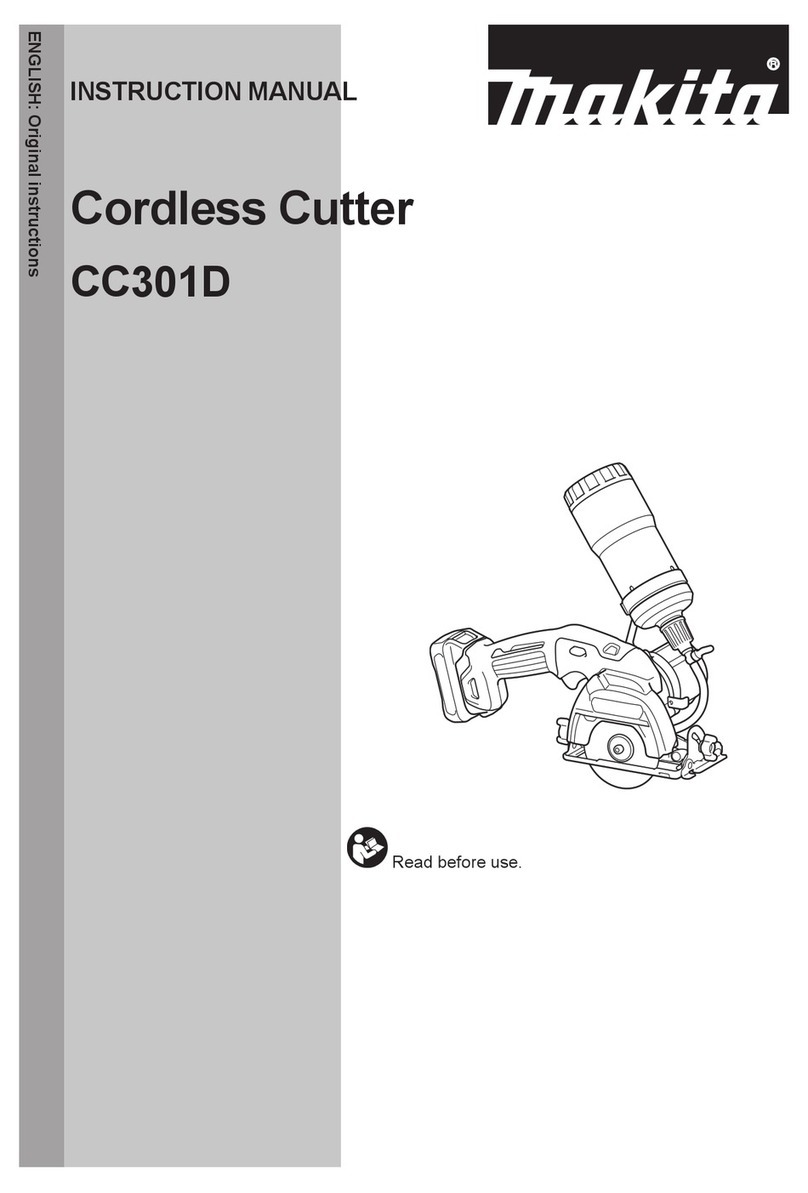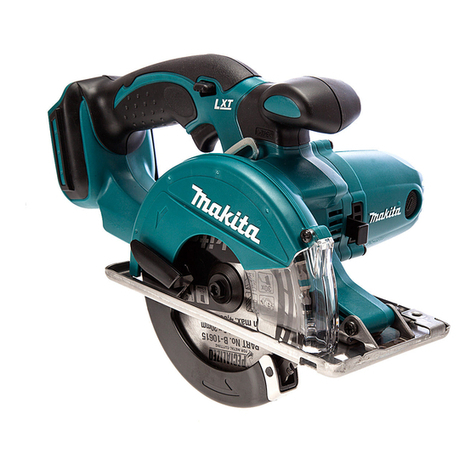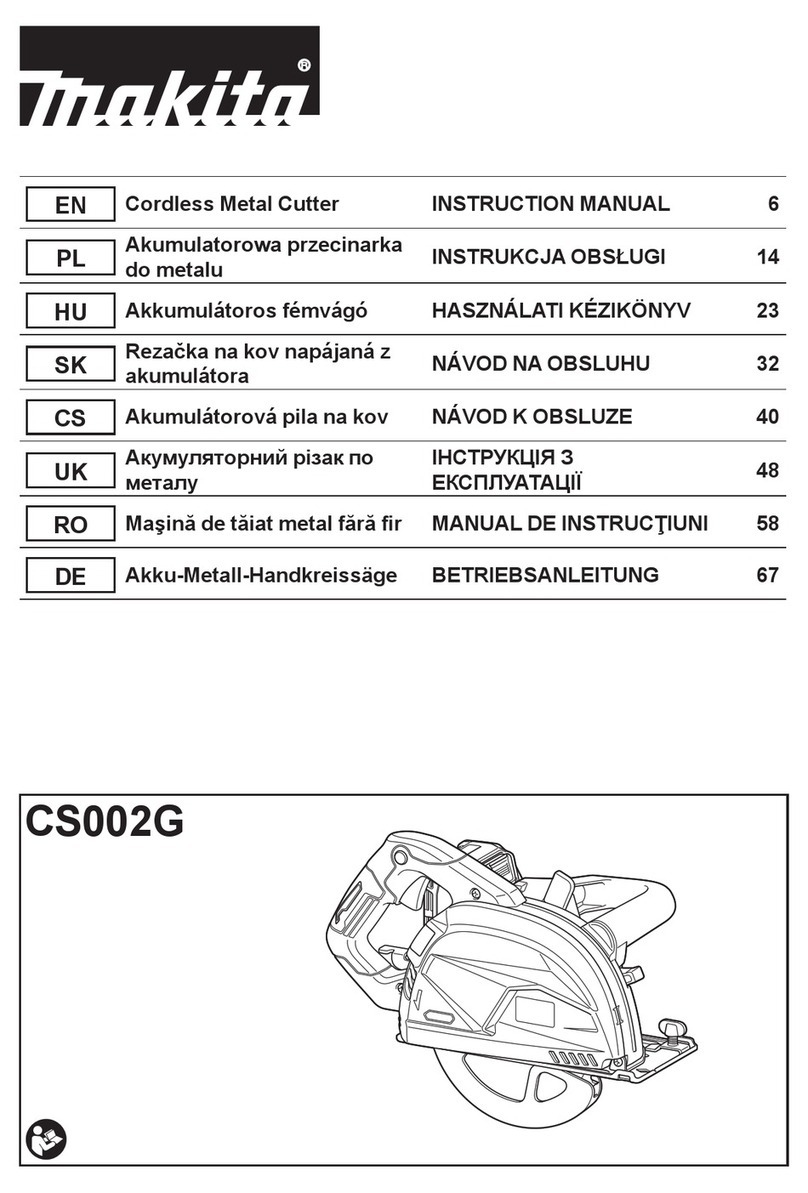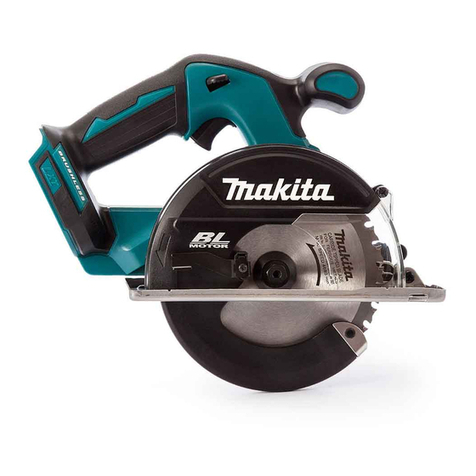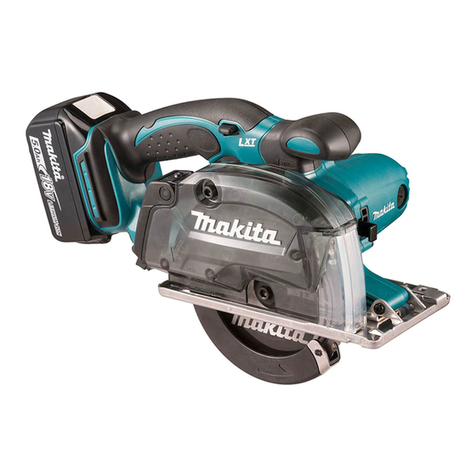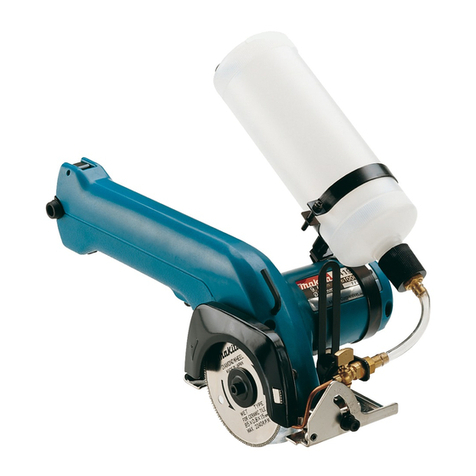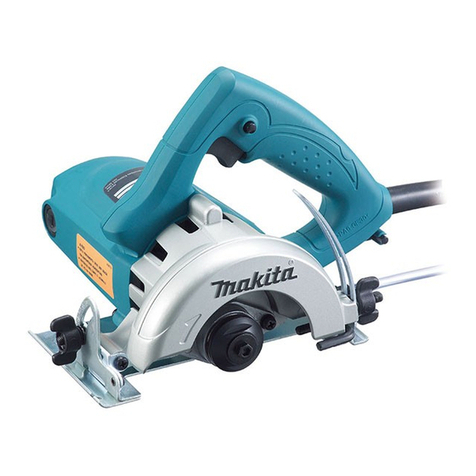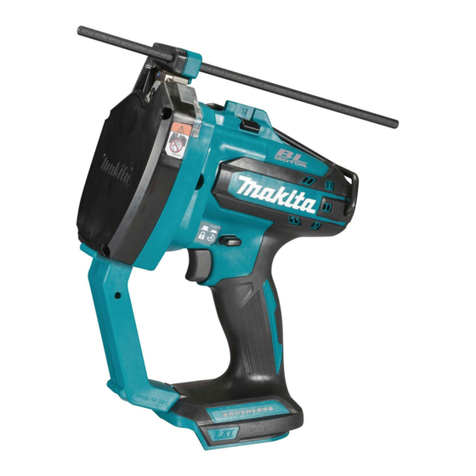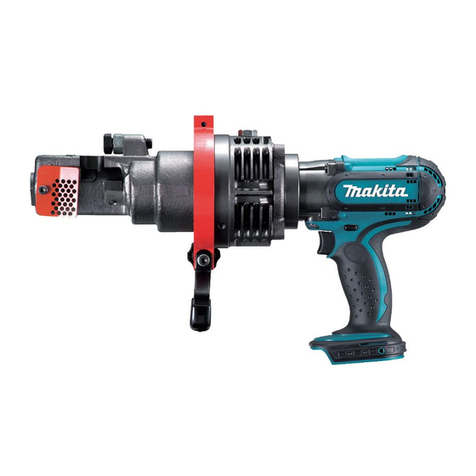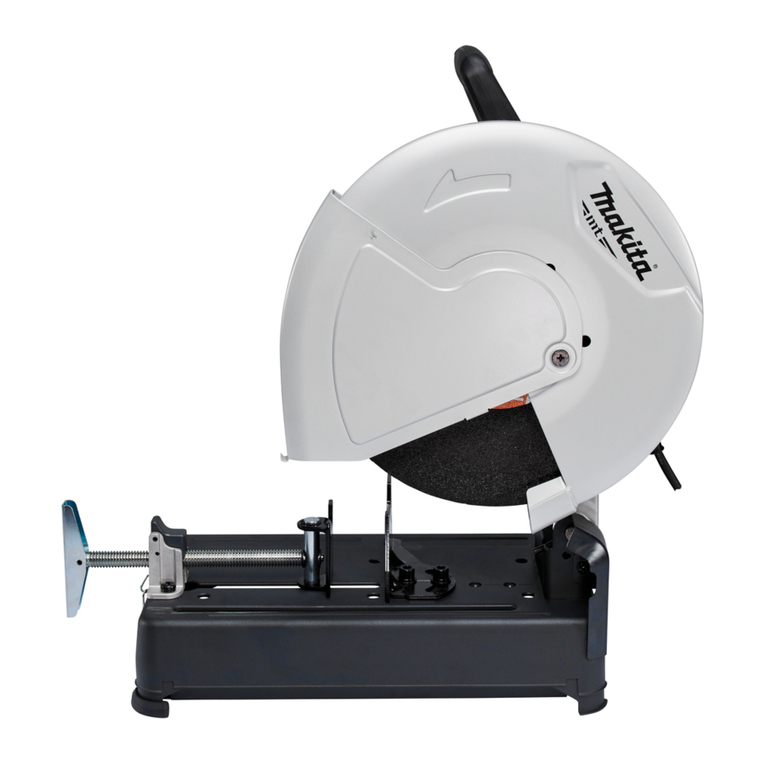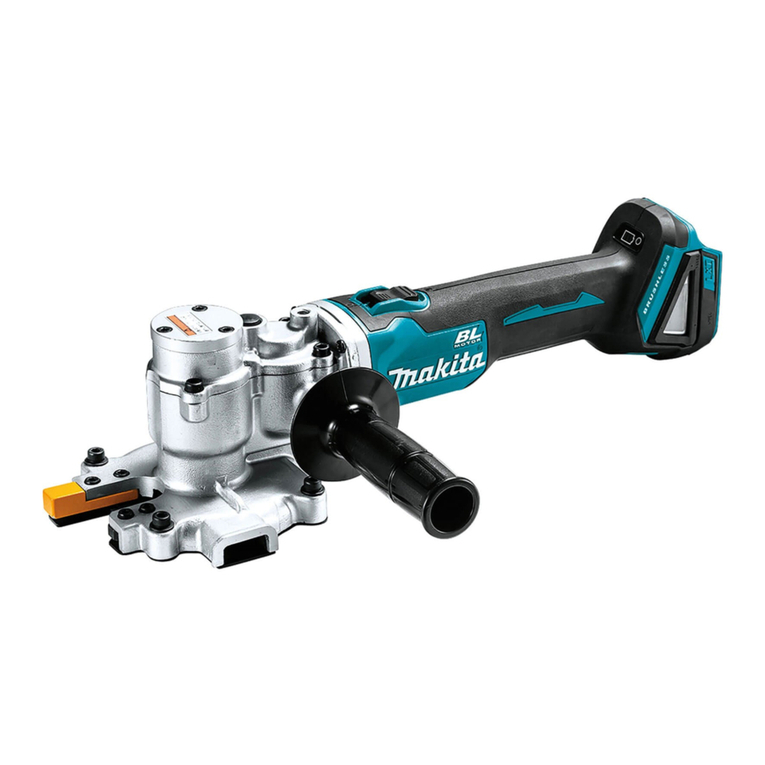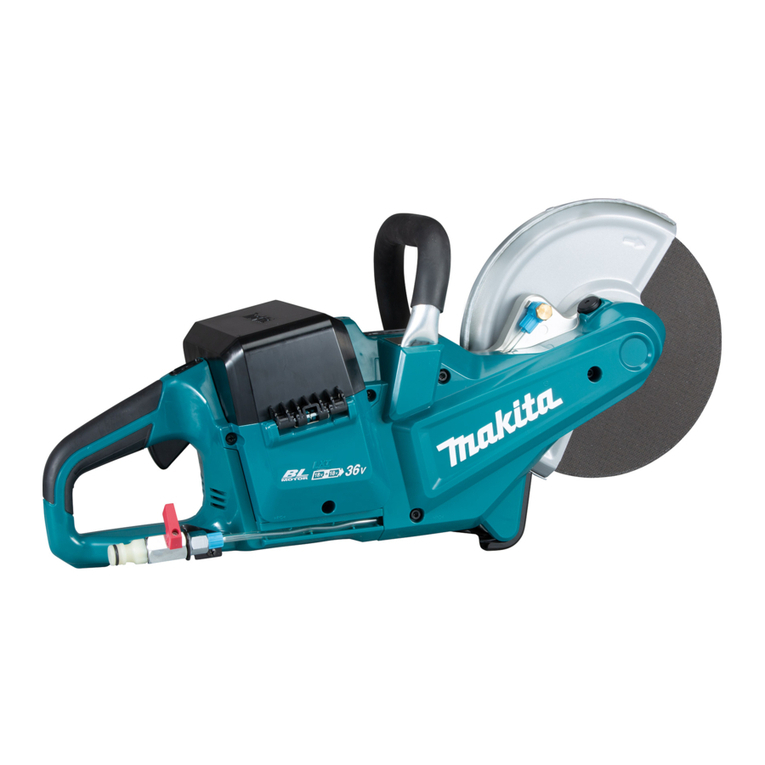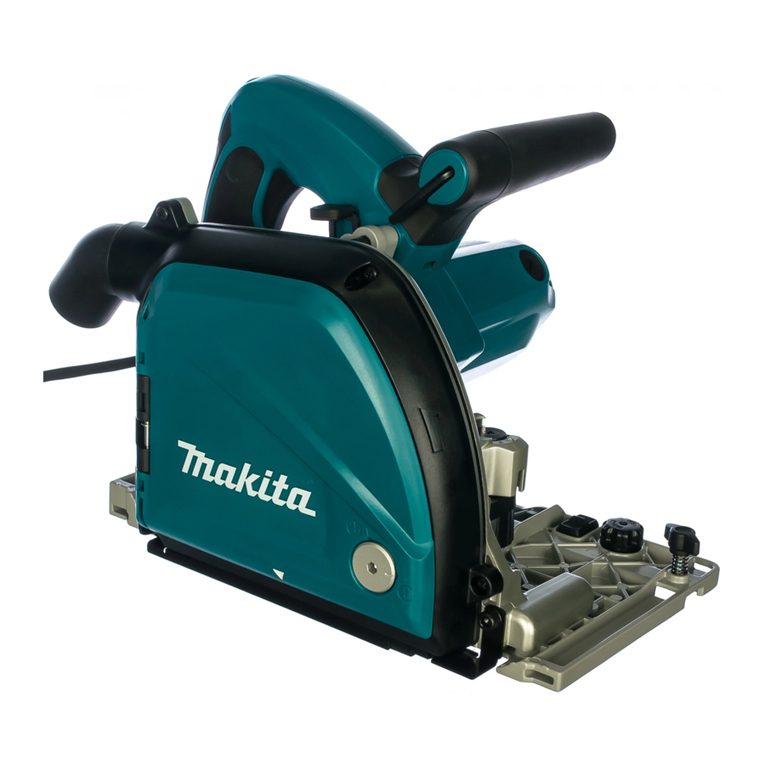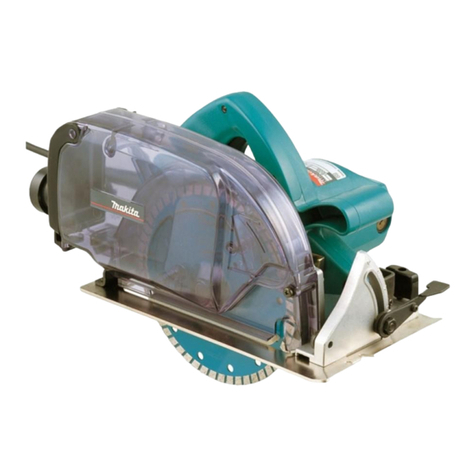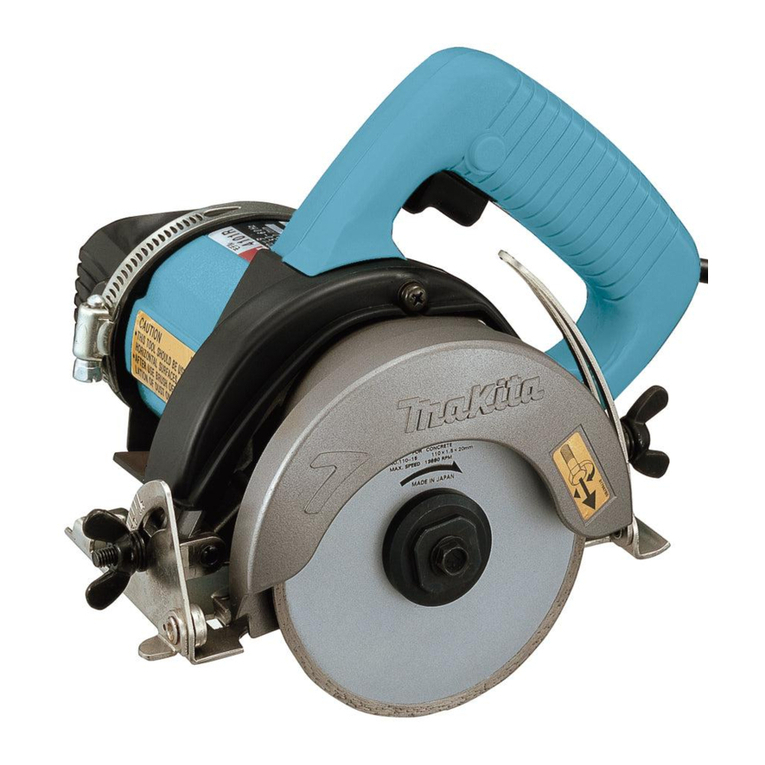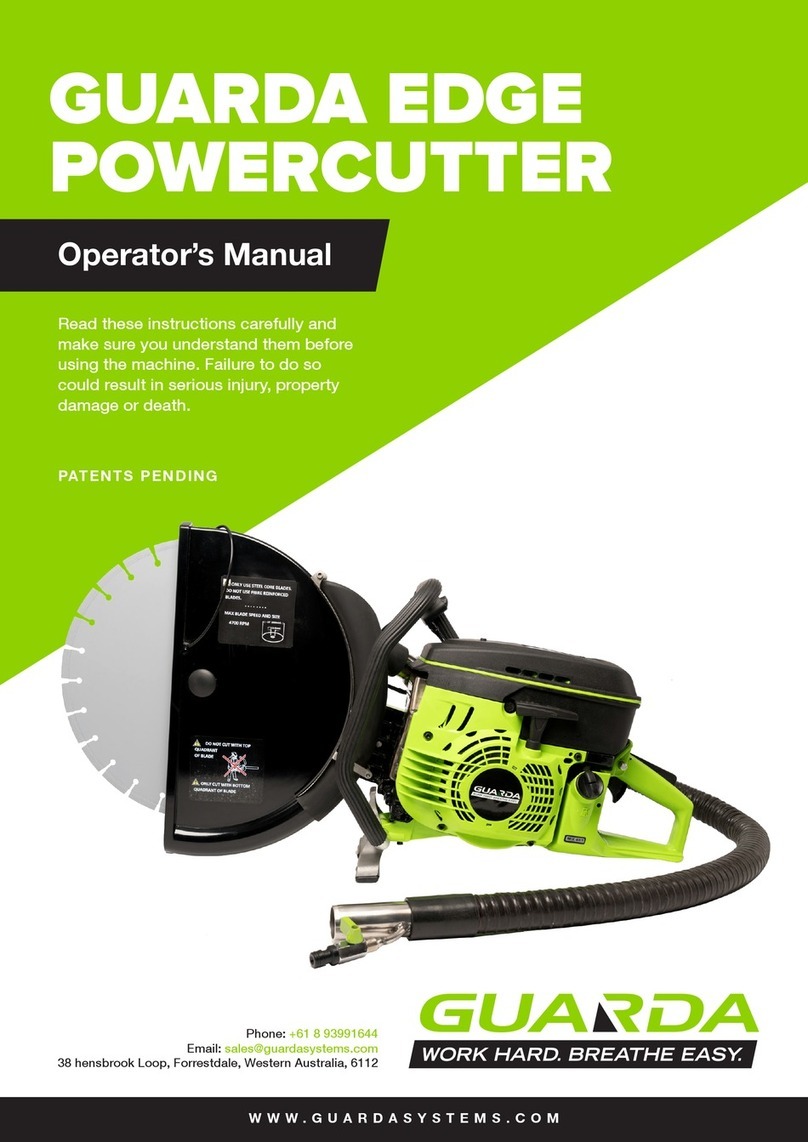WARNING:
Read all safety warnings, instruc-
power tool. Failure to follow all instructions listed below
Save all warnings and instruc-
tions for future reference.
The term "power tool" in the warnings refers to your
mains-operated (corded) power tool or battery-operated
(cordless) power tool.
Work area safety
1. Keep work area clean and well lit. Cluttered or
dark areas invite accidents.
2. Do not operate power tools in explosive atmo-
liquids, gases or dust.
which may ignite the dust or fumes.
3.
operating a power tool. Distractions can cause
you to lose control.
Electrical Safety
1.
tools.
reduce risk of electric shock.
2.
refrigerators. There is an increased risk of elec-
tric shock if your body is earthed or grounded.
3. Do not expose power tools to rain or wet con-
ditions.
the risk of electric shock.
4.
or moving parts. Damaged or entangled cords
increase the risk of electric shock.
5.
extension cord suitable for outdoor use. Use of
a cord suitable for outdoor use reduces the risk of
electric shock.
6. If operating a power tool in a damp location
is unavoidable, use a residual current device
Use of an RCD reduces
the risk of electric shock.
7.
-
ual current of 30 mA or less is always recommended.
8.
However,
users of pacemakers and other similar medical
devices should contact the maker of their device and/
or doctor for advice before operating this power tool.
9.
10.
-
Personal Safety
1.
-
ication. A moment of inattention while operating
2. Use personal protective equipment. Always
wear eye protection.
as a dust mask, non-skid safety shoes, hard hat or
hearing protection used for appropriate conditions
3.
to power source and/or battery pack, picking
Carrying power tools with
that have the switch on invites accidents.
4.
A wrench or a key left
attached to a rotating part of the power tool may
5.
balance at all times. This enables better control
of the power tool in unexpected situations.
6.
from moving parts.
long hair can be caught in moving parts.
7.
dust extraction and collection facilities, ensure
Use of
dust collection can reduce dust-related hazards.
8.
Do not let familiarity gained from frequent use
of tools allow you to become complacent and
ignore tool safety principles. A careless action can
9. Always wear protective goggles to protect
It is an employer's responsibility to enforce
-
-
